
Bulletin E3534
Spotted Lanternfly – A Guide for Homeowners and Residents in Michigan
DOWNLOAD
September 17, 2024 - Tim Harrison, Nathaniel Walton and Deborah McCullough, Michigan State University
What is spotted lanternfly?
Spotted lanternfly (SLF) (Lycorma delicatula), native to eastern Asia, is an invasive insect that has become established in several states in the eastern United States, including Michigan. As the name suggests, adults have spotted wings and abdomens that look like a glowing lantern (Photo 1). These insects are in the order Hemiptera, which includes the “true bugs,” and the planthopper family (Fulgoridae). Immature and adult SLFs pierce the bark of tree branches, trunks and woody vines and feed on sap (Photo 2). When disturbed, these insects will jump, often a considerable distance, to startle would-be predators.
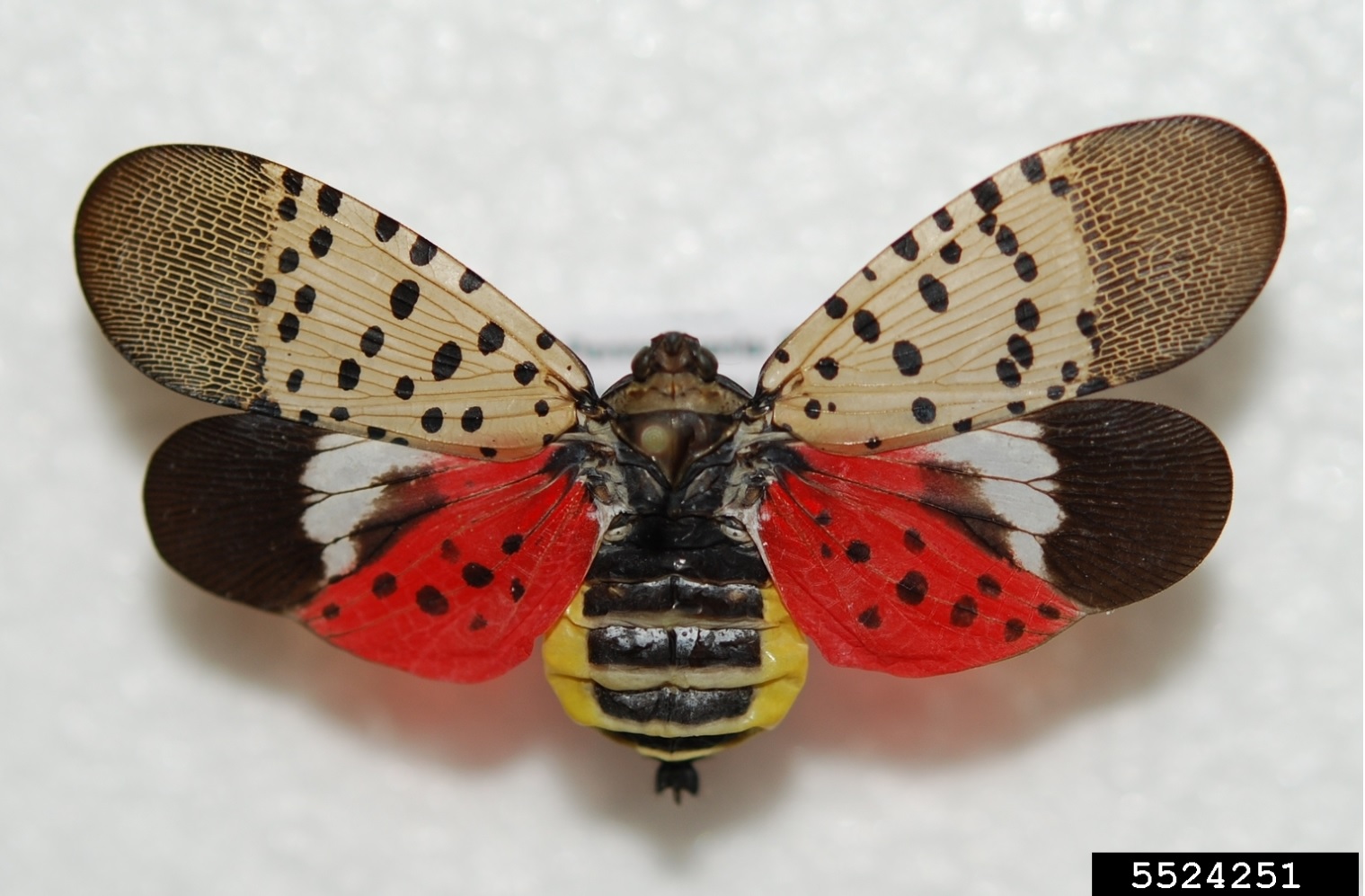
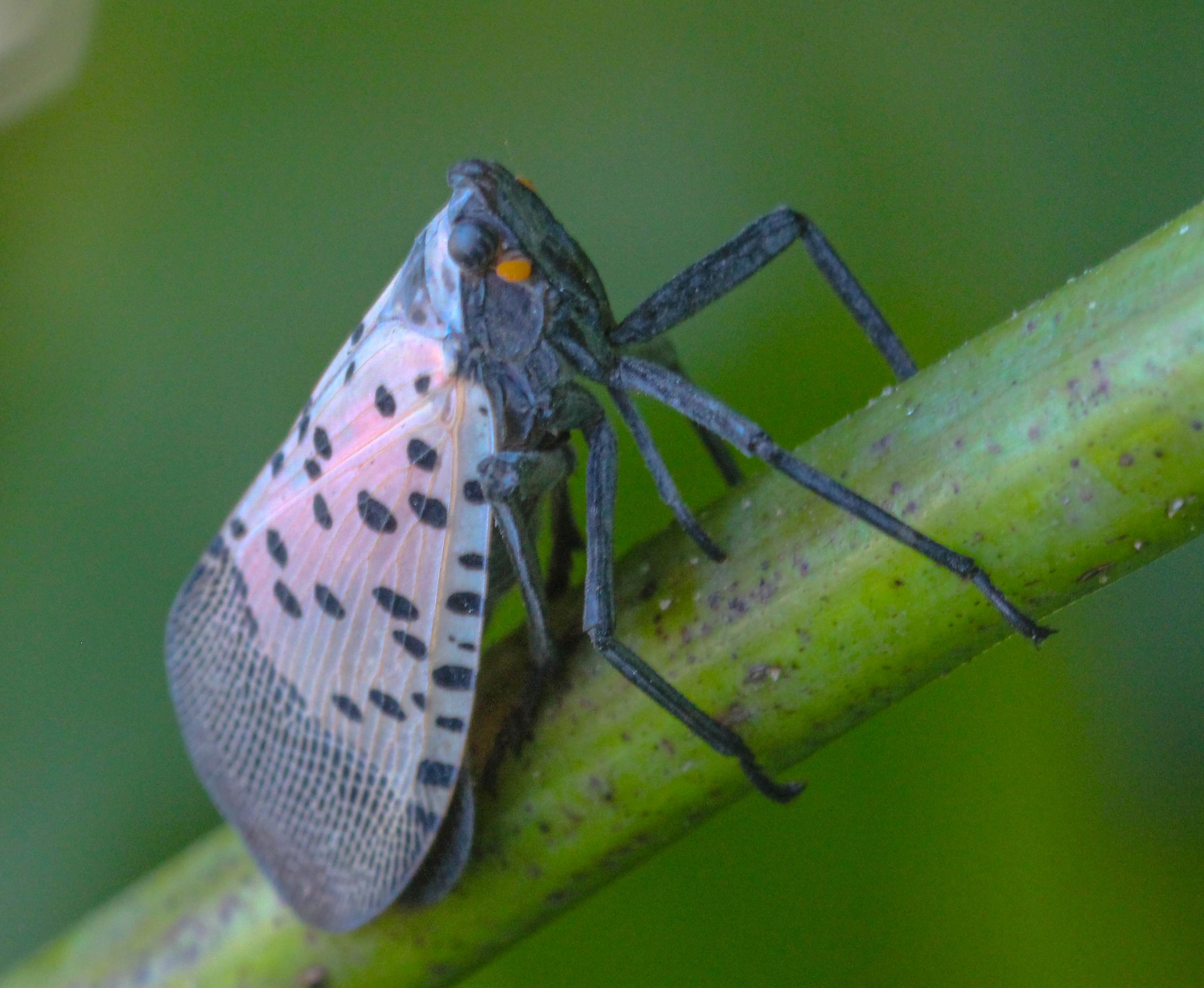
Why is spotted lanternfly in the news?
SLF has been making headlines since 2014 when it was first detected in Pennsylvania. High numbers of SLF feeding on trees in urban and residential areas attract attention, especially when the relatively large, colorful adults are present. Immature and adult SLFs excrete honeydew as they feed, which will coat sidewalks, vehicles, plants and any object beneath infested trees. Honeydew is the sugary water left after the insects digest the nutrients in the plant sap. Wasps, bees and ants are attracted to the sweet honeydew. Swarming wasps, along with the black sooty mold that grows on honeydew, can make things unpleasant for residents. Campaigns encouraging residents to smoosh and smash SLF get plenty of views on social media every summer (Photo 3).
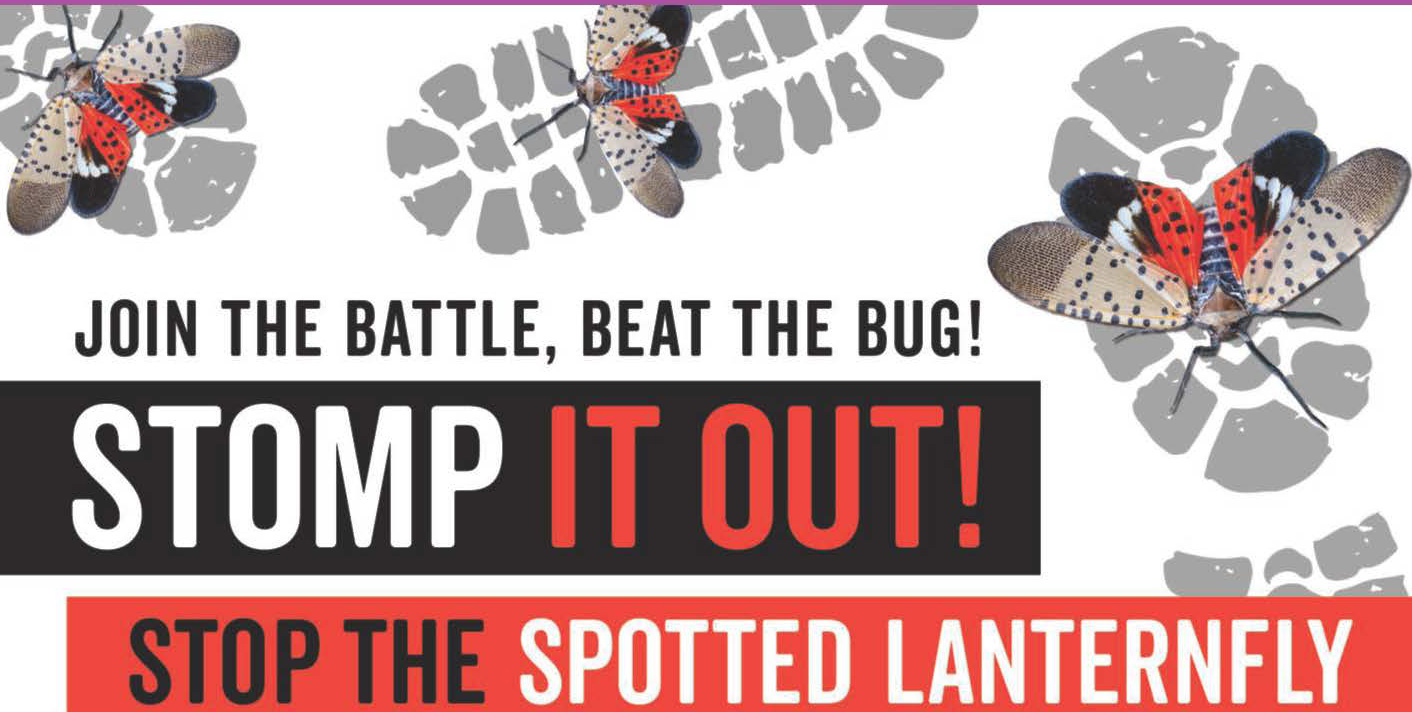
Is spotted lanternfly here in Michigan?
Unfortunately, SLF is now established in Michigan. A small population of SLF was first detected in 2022 in Pontiac (Oakland County, Photo 4). This infestation was probably started by SLF eggs on nursery stock shipped to Michigan from the east coast. In 2024, SLF was detected in areas of Monroe and Wayne counties, at least partly reflecting the high-density infestations in Toledo, Ohio, just south of the state border. Although adult SLF have wings and can fly, they are also good hitchhikers and can be carried on vehicles and outdoor items. Recent detections in several areas of northern Ohio, along with northern Indiana and Illinois, suggest that SLF is likely to arrive in other Michigan locations soon.
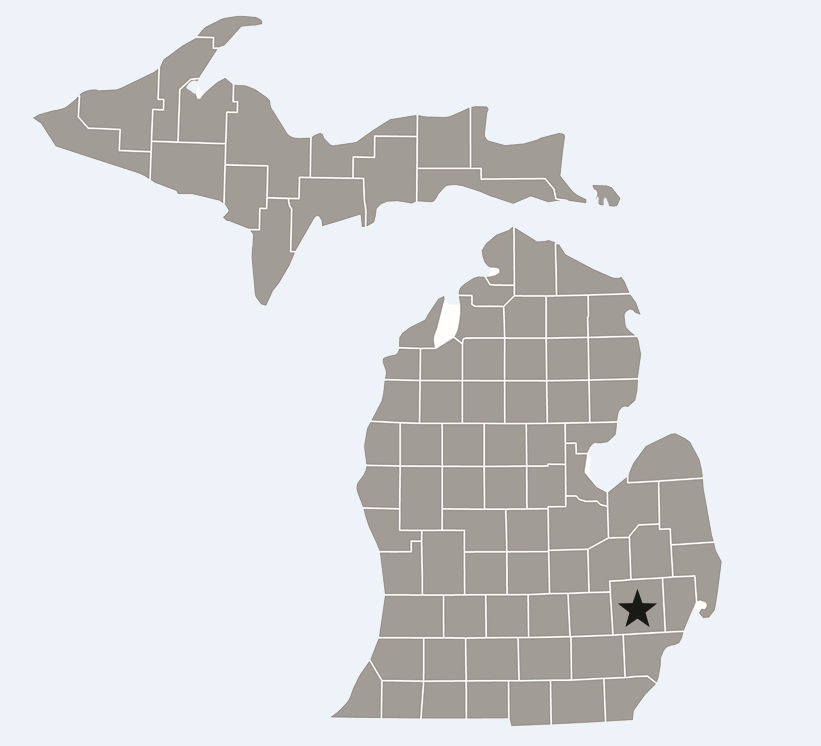
What do spotted lanternfly look like?
As SLF grow and develop, their appearance changes. Adults (Photo 5), which can be present from August to early November, are approximately 1 inch long and 0.5 inches wide. Their forewings are translucent with a pinkish or gray-brown tint, black spots and thin black stripes on the tips. Their hindwings are bright red with black spots, black tips and a white stripe. At rest, adult SLF hold their wings tented over their bodies. When the adults extend their wings, their black and yellow abdomen is revealed.
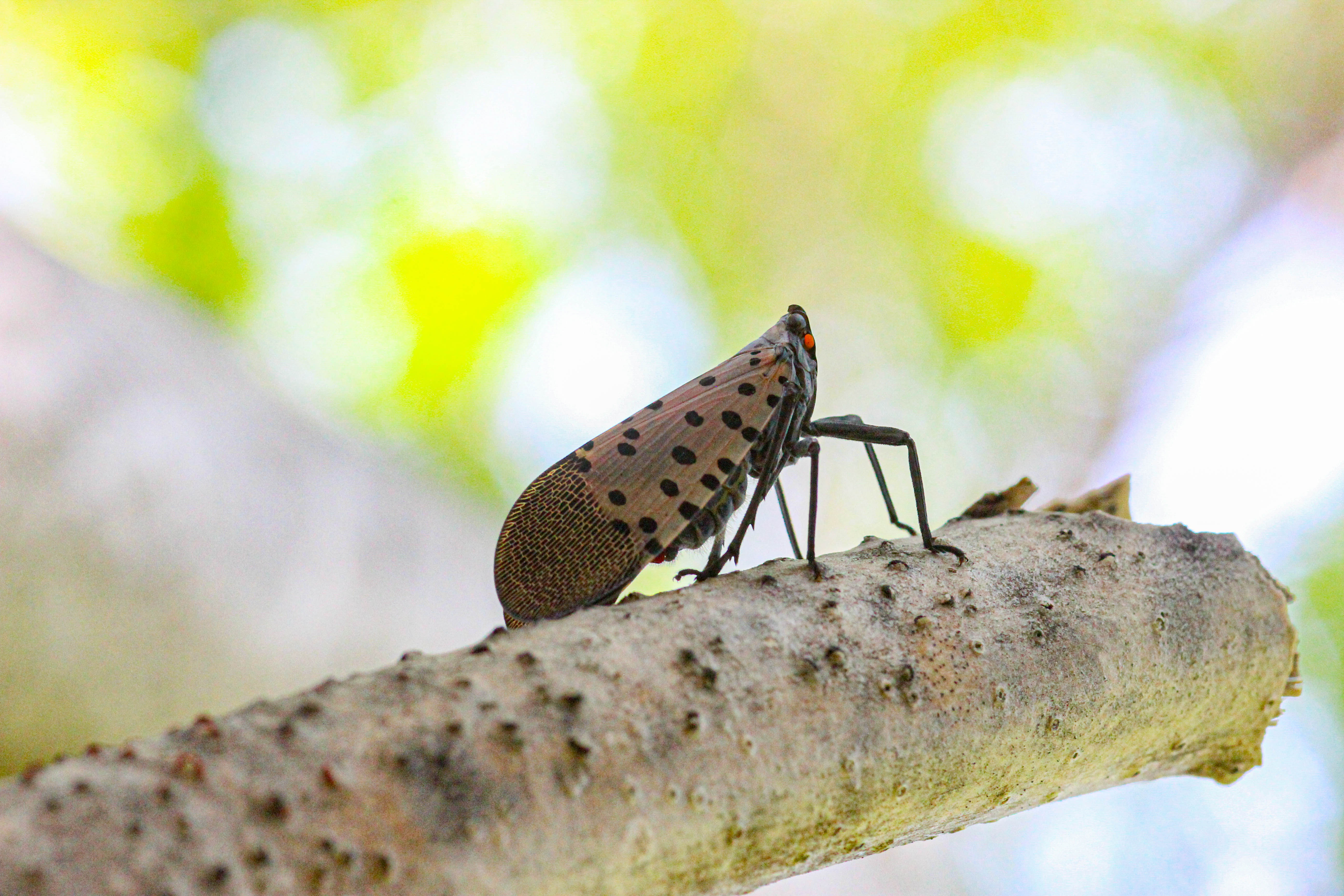
Immature stages of SLF, called nymphs (Photo 6), are wingless and pear-shaped. During the summer, nymphs progress through four stages of development called instars. First through third instars are black with white spots, while fourth instars are mostly red orange with white spots and some black markings. Fourth instars eventually molt into adults, the only life stage with wings. A detailed life cycle and images of SLF stages are available at https://www.canr.msu.edu/spotted-lanternfly.
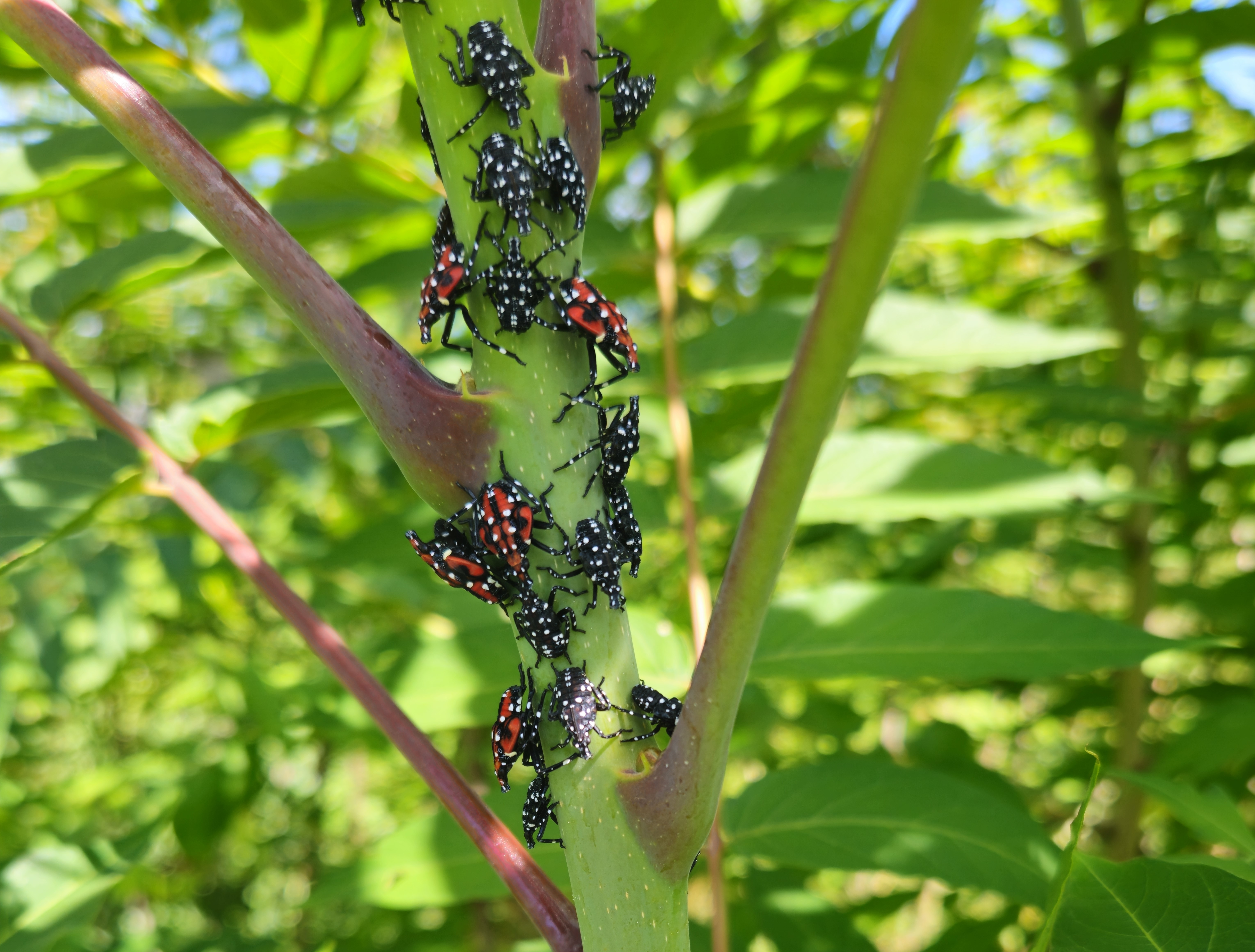
Once SLF adult females have matured and mated, each female will lay one or sometimes two egg masses (Photo 7). Egg masses are usually laid on tree trunks or branches but can also be on other hard surfaces ranging from posts, bricks and landscape boulders to vehicles, flowerpots and outdoor furniture. Females cover their egg mass, which is usually about 1 inch wide and 2 inches long, with a shiny cement-gray or tan substance that eventually weathers away, exposing the columns of eggs. Most egg masses contain 25-35 eggs but a large egg mass can contain up to 60 eggs. Eggs overwinter and hatch in late spring. Once eggs have hatched, slits in the eggs are apparent.
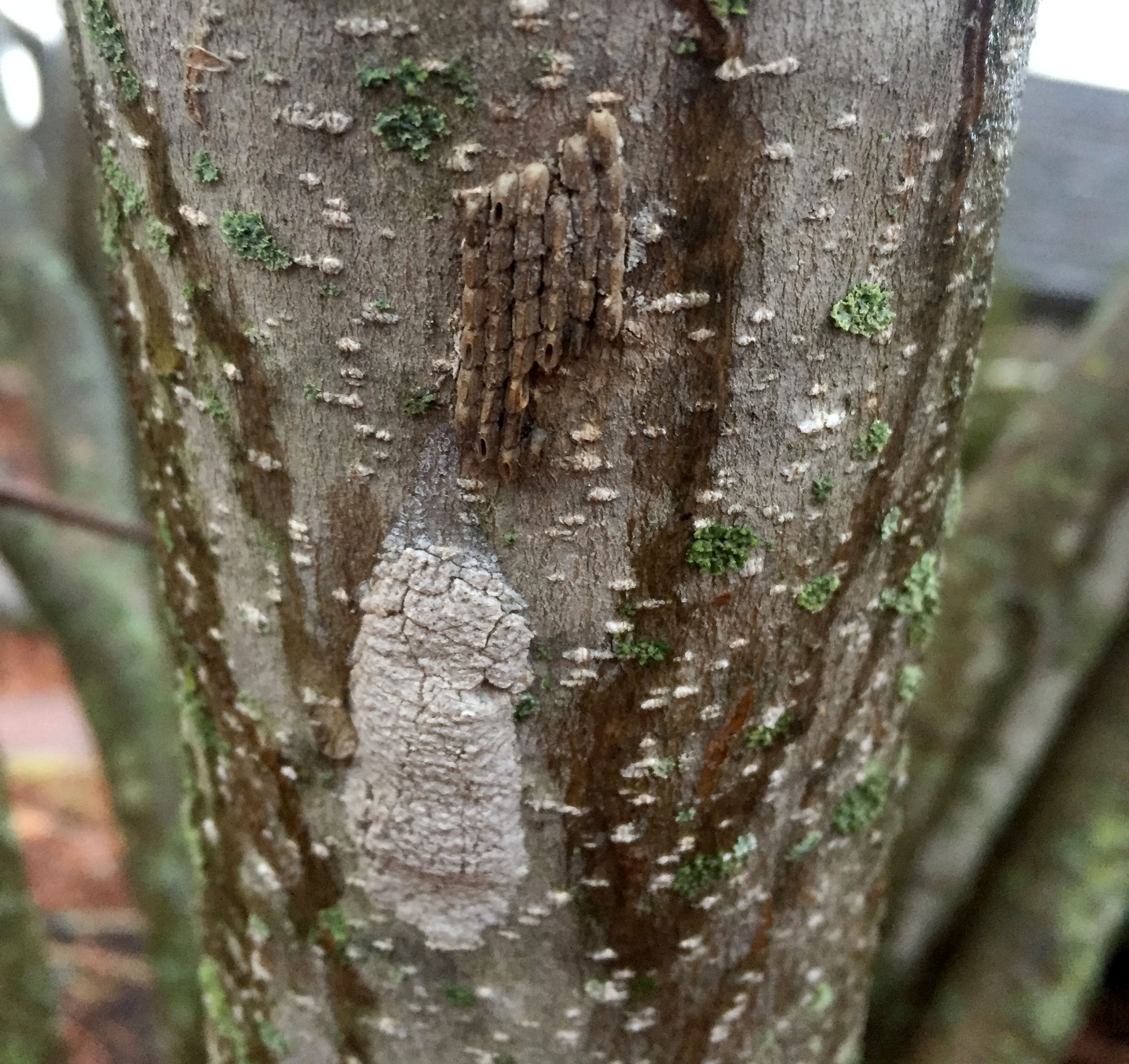
What do spotted lanternfly feed on?
SLF can feed on a variety of trees and woody vines, including maples, willows, black walnut, fruit trees, grapevines and hops vines. However, tree of heaven (Ailanthus altissima) is their most preferred host. Tree of heaven, native to China, is an invasive species commonly found in urban settings thanks to its ability to grow in disturbed, nutrient poor sites. High densities of SLF are frequently associated with individual large trees of heaven or with large stands of younger trees. Information on tree of heaven identification, biology, its history in the U.S. and management options is available in the Michigan State University Extension bulletin E3476, “A Tale of Two Invaders: Tree of Heaven and Spotted Lanternfly” at https://www.canr.msu.edu/resources/a-tale-of-two-invaders-tree-of-heaven-and-spotted-lanternfly.
Why should I care about spotted lanternfly?
Trees rarely sustain serious injury from SLF feeding, although woody grapevines (Photo 8) and hops vines can be affected. High densities of SLF, however, can be an unpleasant annoyance for people living or working outdoors. By mid or late summer, droplets of sticky honeydew excreted by the insects may coat nearby plants, driveways, sidewalks and vehicles. Ants, bees and wasps (Photo 9) are often attracted to the sugary deposits. Black sooty mold growing on the honeydew is unappealing, difficult to remove and can reduce the ability of plant leaves to capture light for photosynthesis (Photo 10).
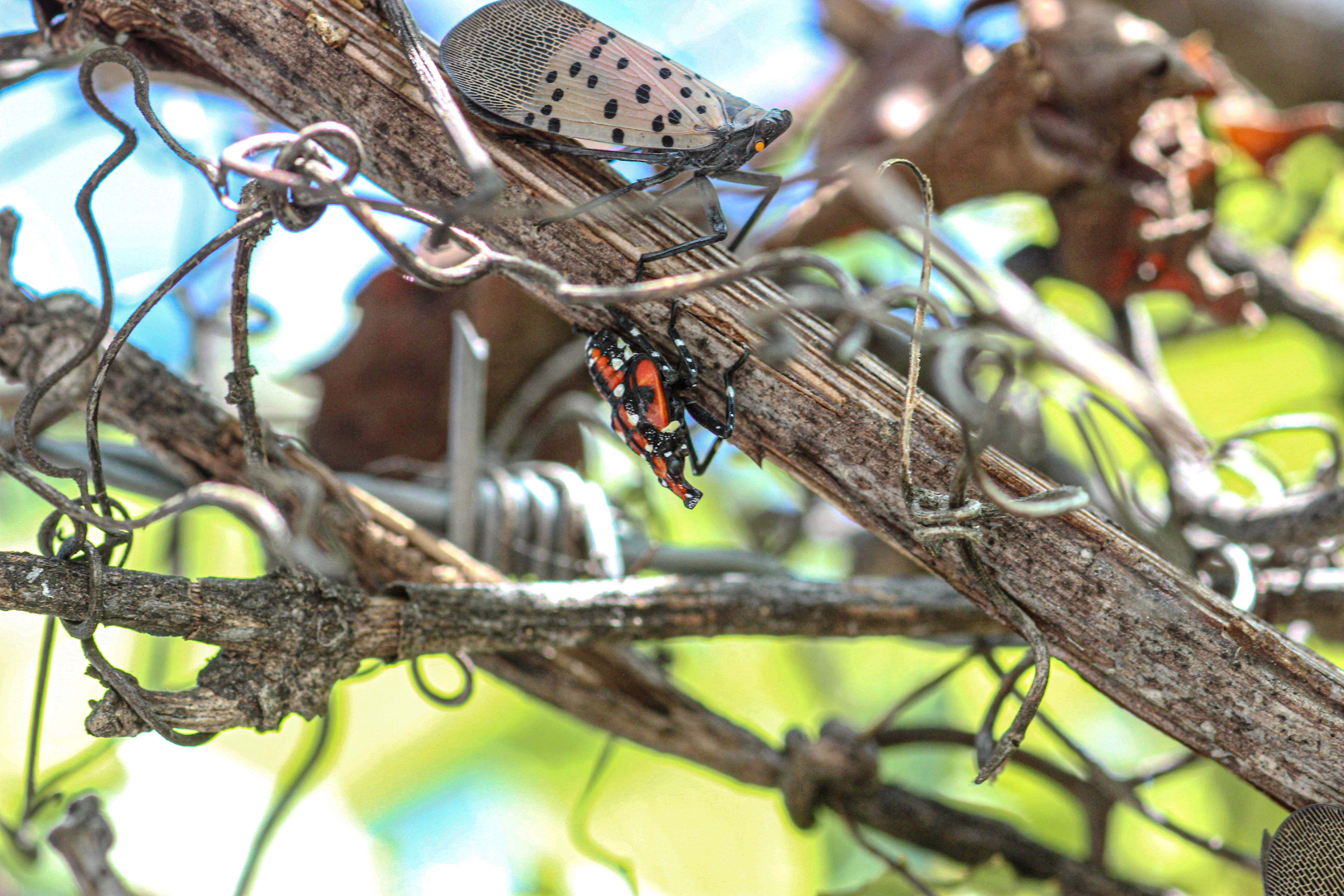

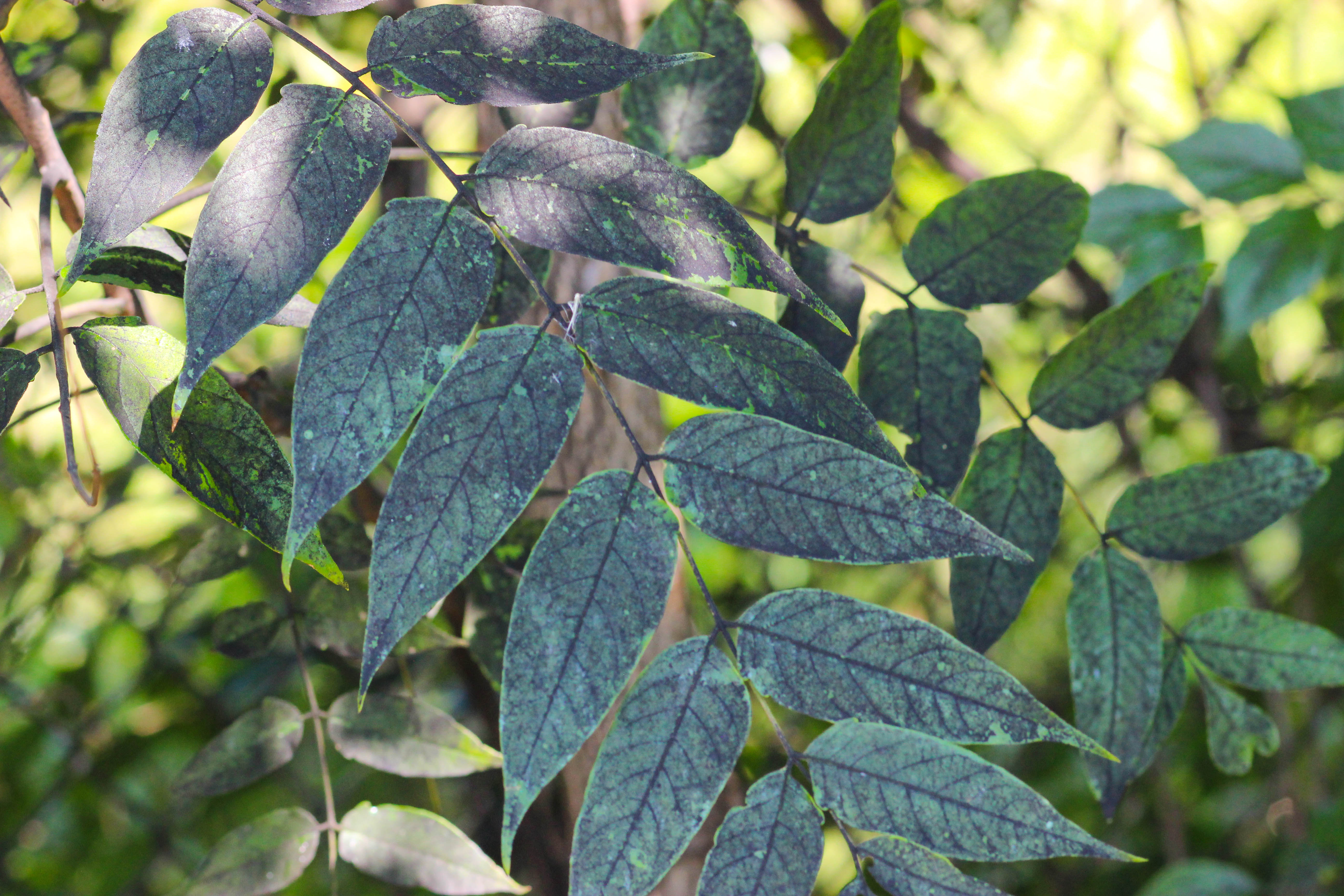
Does spotted lanternfly bite or sting?
SLF cannot bite or sting and will not physically harm people (Photo 11), pets or livestock.
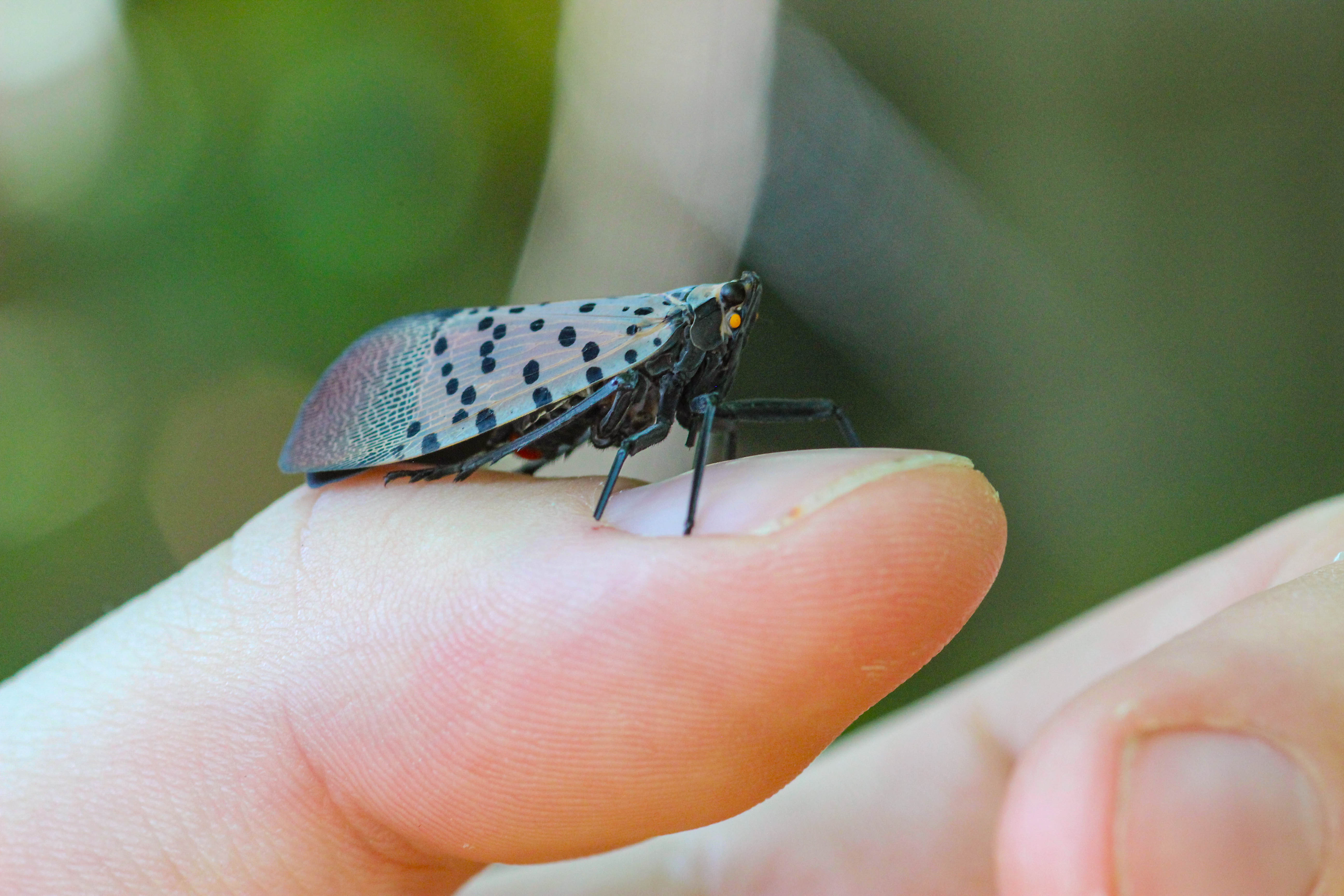
What should I do if I think I found a spotted lanternfly?
If you believe you have encountered one or more SLF, (1) take a picture, (2) note the address, location or GPS coordinates and (3) if possible, capture one or a few SLF in a jar or a plastic bag with a zip closure. Photos and specimens allow scientists and agency personnel to positively identify SLF and track new infestations. Suspect SLF can be reported to the Midwest Invasive Species Network at https://www.misin.msu.edu/ or the Michigan Department of Agriculture and Rural Development at https://www.Michigan.gov/SpottedLanternfly.
What is Michigan doing about spotted lanternfly?
State and federal agencies, local invasive species management groups and universities in Michigan are involved in SLF detection surveys and trapping (Photo 12). Locations where SLF has been reported and areas likely to be at risk for SLF introductions are priorities for these surveys. When SLF is detected, delimitation surveys are conducted to determine the extent and severity of the local infestation. Results from those surveys inform decisions about further management and regulatory activities.

Can we just eradicate spotted lanternfly?
Unfortunately, SLF is an invader, not a tourist, and is likely here to stay. Several options are available for homeowners and residents in areas where SLF densities are high.
What options do I have if spotted lanternfly is found on my property?
Property owners and residents have a variety of options available for dealing with SLF. Choosing a tactic will depend on the severity of the infestation, SLF life stage(s) present and whether tree of heaven is present. When making decisions about SLF management, consider tactics that will avoid or minimize negative impacts on other organisms and the environment.
Removing tree of heaven is often the first step to prevent or at least limit the severity of SLF infestations. Eliminating tree of heaven can be unusually challenging because of the ability of these trees to regenerate via stump or root sprouts (Photo 13). Recommendations for managing tree of heaven are available at https://www.canr.msu.edu/resources/a-tale-of-two-invaders-tree-of-heaven-and-spotted-lanternfly.
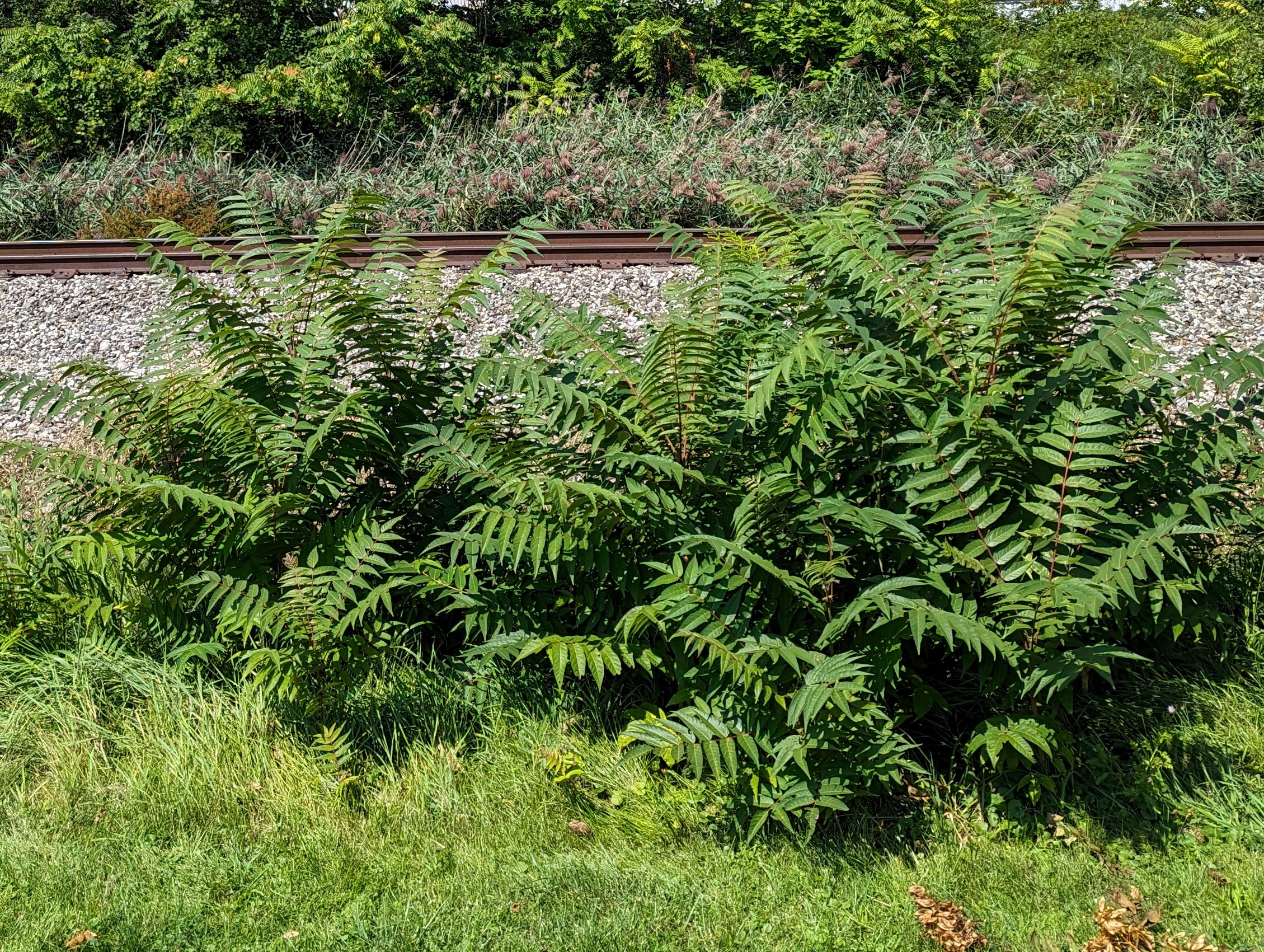
Physical or mechanical SLF control methods can include crushing nymphs or adults that are within reach. Scraping new (unhatched) egg masses into a bucket or plastic bag of soapy water (i.e., dish soap) will kill the eggs. Handheld vacuums or wet/dry vacuums can be used to capture SLF nymphs or adults (Photo 14). Insects can then be killed in a bucket of soapy water.

If trees or woody vines are accessible, products such as insecticidal soap, horticultural oil or neem oil will control SLF nymphs or adults if the insects are well coated by the spray. Insecticidal soap and oils are less likely to harm other insects compared to broad spectrum insecticides. Broad spectrum insecticides can be applied as cover sprays and will kill SLF. These products, however, are toxic to other insects that encounter treated trees, including beneficial predatory or pollinating insects.
Systemic insecticides, such as dinotefuran, can be applied to tree of heaven or other infested hosts in areas where SLF densities are high. These products are transported in water-conducting cells from the base of the tree into the canopy (Photo 15) and are highly effective for controlling SLF. Note, however, that many beneficial pollinators feed on nectar or pollen in flowers on tree of heaven. Do not apply systemic insecticides until at least mid-summer (e.g., July) after flowering is completed. Late summer applications of dinotefuran will also ensure that the toxic compounds are present when the relatively large fourth instars and SLF adults are feeding. Always follow instructions on the pesticide label.
More detailed information about SLF control options is available from PennState Extension at https://extension.psu.edu/spotted-lanternfly-management-guide.
This work is supported by the Crop Protection and Pest Management Program [grant no 2024-70006-43569] from the USDA National Institute of Food and Agriculture. Any opinions, findings, conclusions, or recommendations expressed in this publication are those of the author(s) and do not necessarily reflect the view of the U.S. Department of Agriculture.



 Print
Print Email
Email





